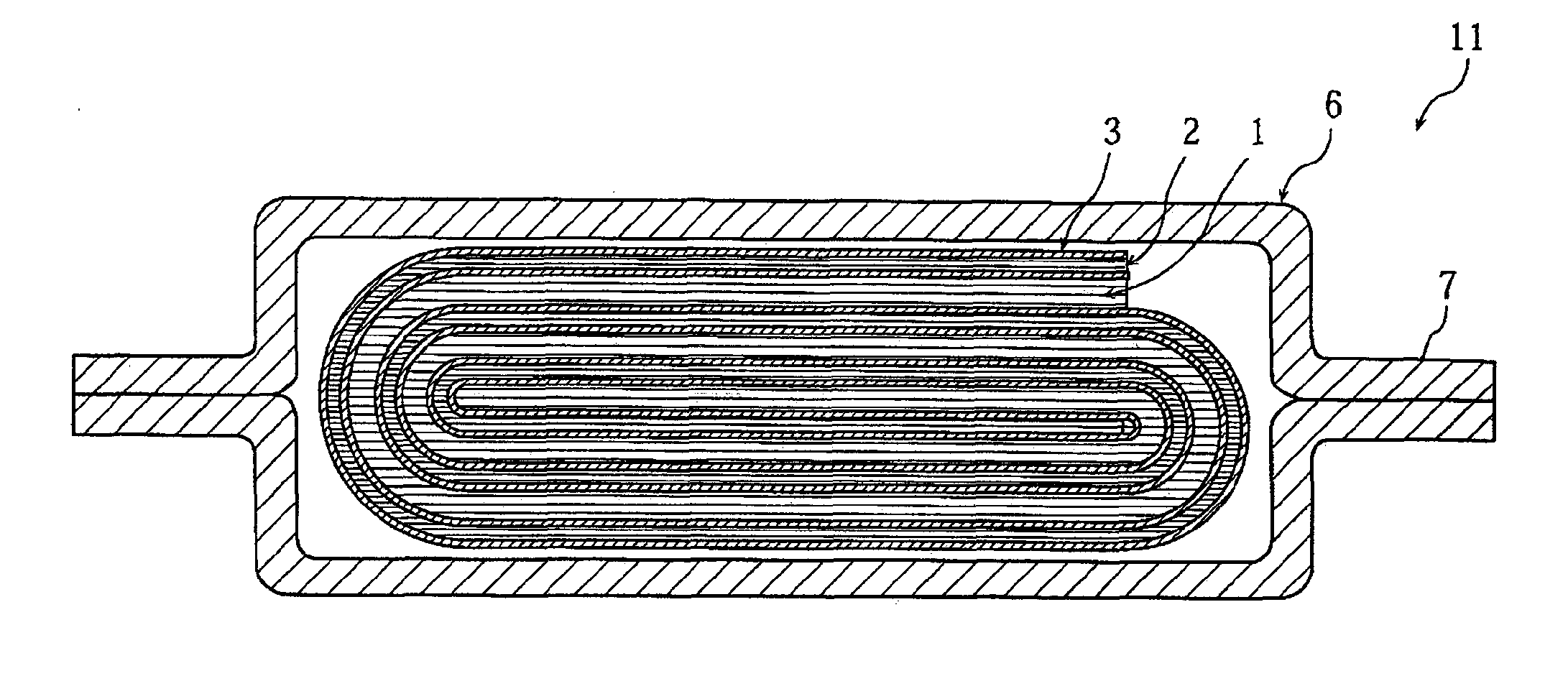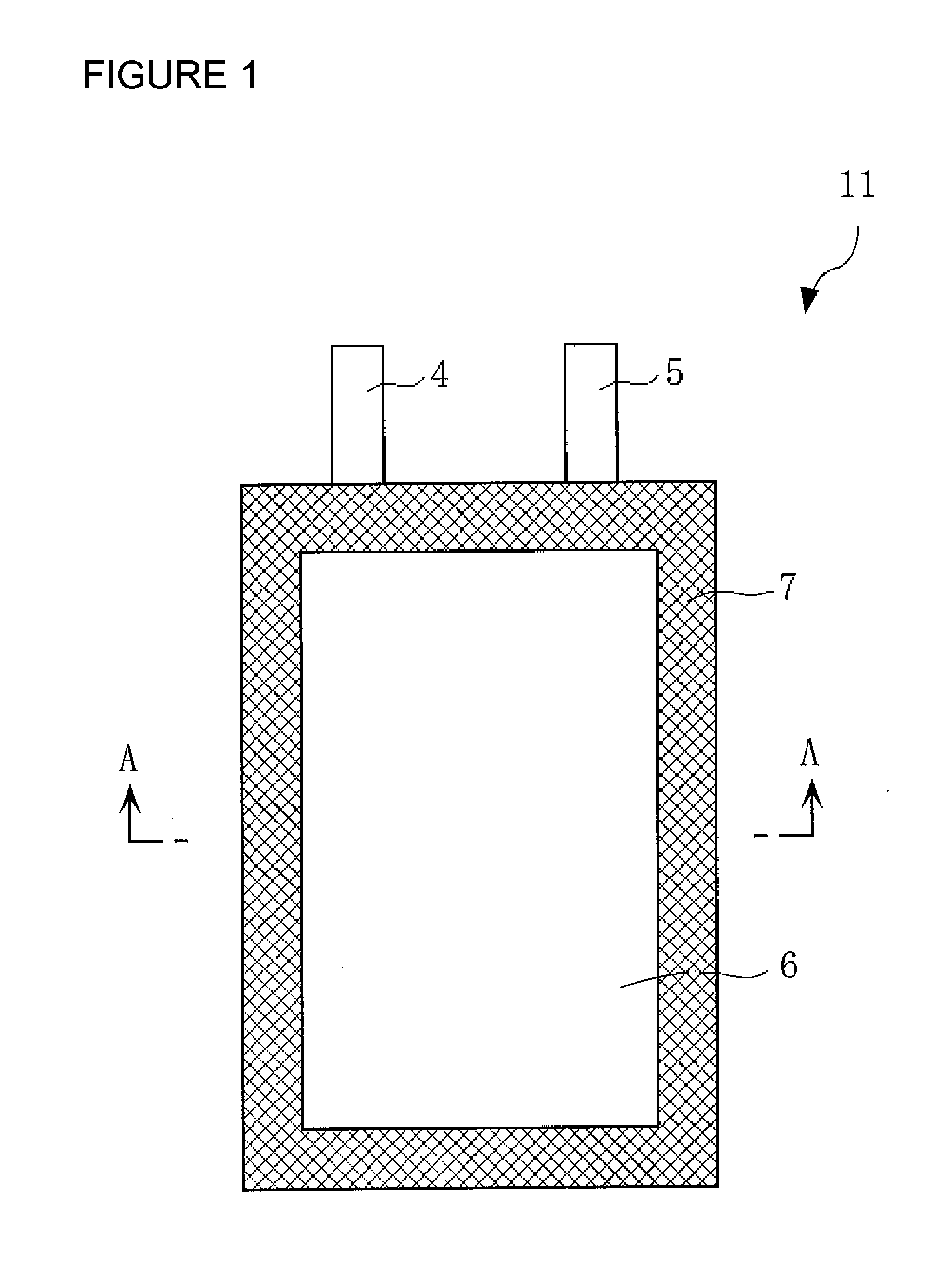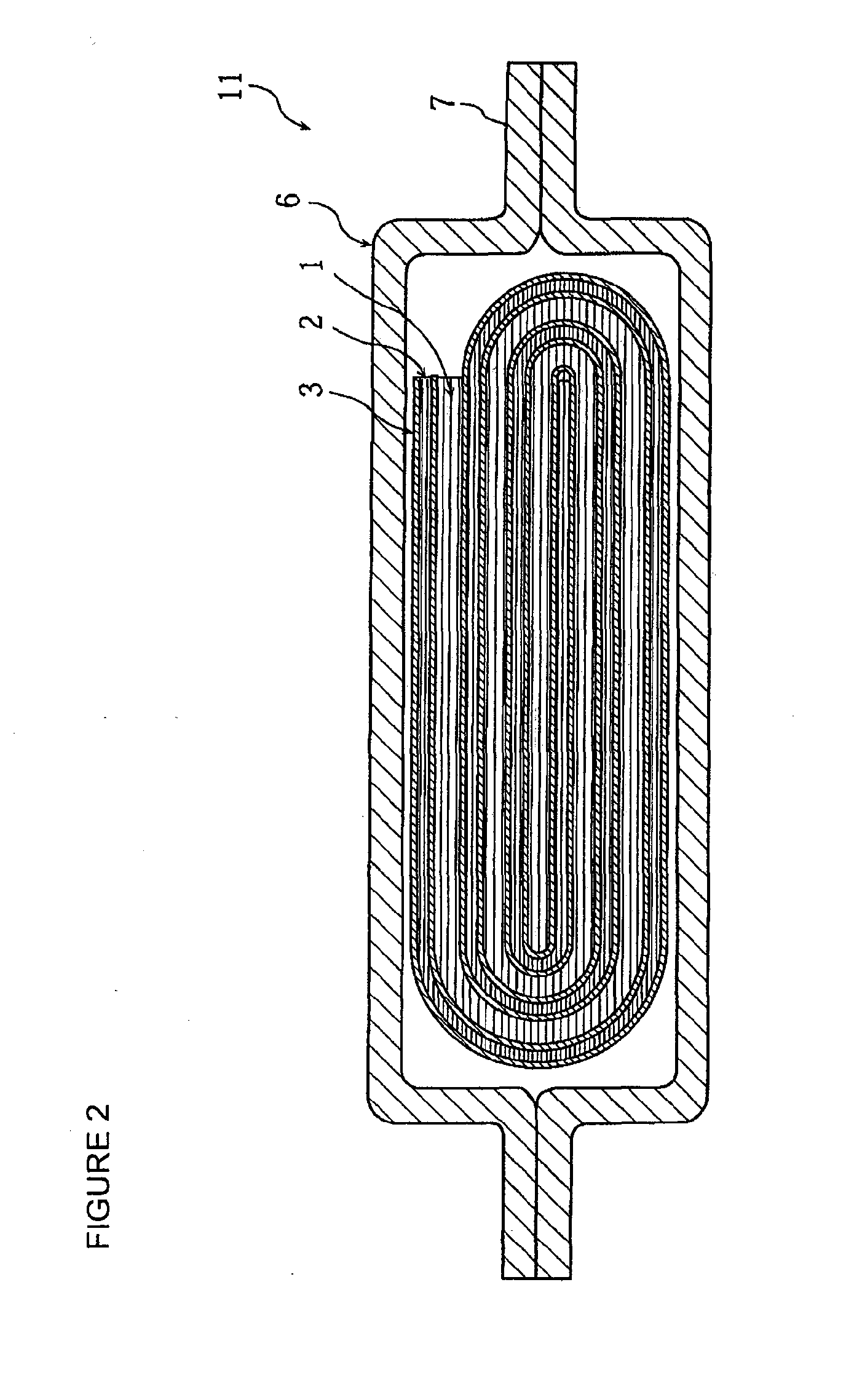Positive electrode active material for nonaqueous electrolyte secondary battery, method for making the same, positive electrode including the same, and battery including the positive electrode
- Summary
- Abstract
- Description
- Claims
- Application Information
AI Technical Summary
Benefits of technology
Problems solved by technology
Method used
Image
Examples
first example
Example 1
[0050]A battery was fabricated by the same method as described above in the embodiment. This test cell is hereinafter referred to as “Example Battery A1”.
Example 2
[0051]A battery was fabricated as in Example 1 except that the amount of the compound containing erbium and a carbonate was changed to 0.017% by mass on an elemental erbium basis (0.0093% by mass on a CO3 basis) relative to lithium cobaltate. This test cell is hereinafter referred to as “Example Battery A2”.
Example 3
[0052]A battery was fabricated as in Example 1 except that the amount of the compound containing erbium and a carbonate was changed to 0.34% by mass on an elemental erbium basis (0.18% by mass on a CO3 basis). This test cell is hereinafter referred to as “Example Battery A3”.
Comparative Example 1
[0053]A battery was fabricated as in Example 1 except that a compound containing erbium and a carbonate was not adhered to the surface of lithium cobaltate particles (positive electrode active material particle...
second example
[0070]In the Second Example, the effect of using a rare earth element other than erbium was investigated.
example 1
[0071]A battery was fabricated as in Example 1 of the First Example except that lanthanum nitrate hexahydrate was used instead of erbium nitrate pentahydrate and that a compound containing lanthanum and carbonate was adhered to the surface of the lithium cobaltate particle in an evenly dispersed form. The amount of the compound containing lanthanum and a carbonate was 0.057% by mass on an elemental lanthanum basis (0.037% by mass on a CO3 basis) relative to lithium cobaltate. The amount of the adhering compound containing lanthanum and a carbonate is equal to the number of moles of the compound containing erbium and a carbonate used in Example 1 of the First Example in terms of the number of moles of lanthanum. This test cell is hereinafter referred to as “Example Battery B1”.
Example 2
[0072]A battery was fabricated as in Example 1 of the First Example except that neodymium nitrate hexahydrate was used instead of erbium nitrate pentahydrate and that a compound containing neodymium an...
PUM
 Login to View More
Login to View More Abstract
Description
Claims
Application Information
 Login to View More
Login to View More - R&D
- Intellectual Property
- Life Sciences
- Materials
- Tech Scout
- Unparalleled Data Quality
- Higher Quality Content
- 60% Fewer Hallucinations
Browse by: Latest US Patents, China's latest patents, Technical Efficacy Thesaurus, Application Domain, Technology Topic, Popular Technical Reports.
© 2025 PatSnap. All rights reserved.Legal|Privacy policy|Modern Slavery Act Transparency Statement|Sitemap|About US| Contact US: help@patsnap.com



